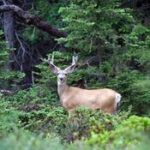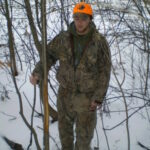As hunting season moves along, it generally becomes more difficult to take a deer. This is especially true for bucks that are generally more cautious than does at any time of the year. But after weeks or months of hunting pressure, the bucks often just seem to disappear. However, there are some things that hunters can do to make late season hunting more productive. Here are some tips that hunters can use to improve their odds of success when hunting whitetails in the late season.
Unless the breeding season is long past in your area, bucks will continue to pursue does virtually regardless of hunting pressure. While a buck is unlikely to come out into an open field during the daylight hours, it is likely that a buck will be keeping an eye on that field of does from nearby cover. A hunter should note places where does are found each morning and evening and plan to hunt nearby cover. A buck may be found, even late in the season, stalking does from the nearest cover.
The introduction of man into the woods in hunting season changes the patterns of deer. While deer may be accustomed to seeing farmers, well tenders and others in rural areas, the deer are used to seeing those people in only certain areas. When hunters head into the woods, the deer quickly adjust to avoid these areas. A hunter should note the places that most other hunters avoid and hunt these areas to find a late season buck. This could include swampy or brushy areas, areas that are too steep for comfort or even small, secluded patches of trees.
As the winter months progress, deer will often change food sources depending on what is available. The foods that are available will vary greatly from one area of the country to the next, but a hunter can keep an eye on deer movements and determine what foods the deer are targeting. When driving or walking through hunting areas, a hunter should watch for food sources such as nuts, berries, fruit and agricultural plantings. Looking at the stomach contents of killed deer and deer droppings can also provide information on what food sources that deer are using.
Late season whitetail bucks may stop or greatly reduce daytime movements, especially during a full moon. A full moon provides enough light for deer to move around and still keep an eye out for dangers. During a late season full moon, hunters may have to either carefully still hunt bedding areas or use deer drives to push whitetails out of their beds to have any chance of success.
Whatever method of hunting a late season deer hunter chooses to use, he or she should get out in the woods and give it a shot. Though the chances of taking a late season deer may not be as good as on opening day, getting out into the woods is the only way to have any chance of success.





